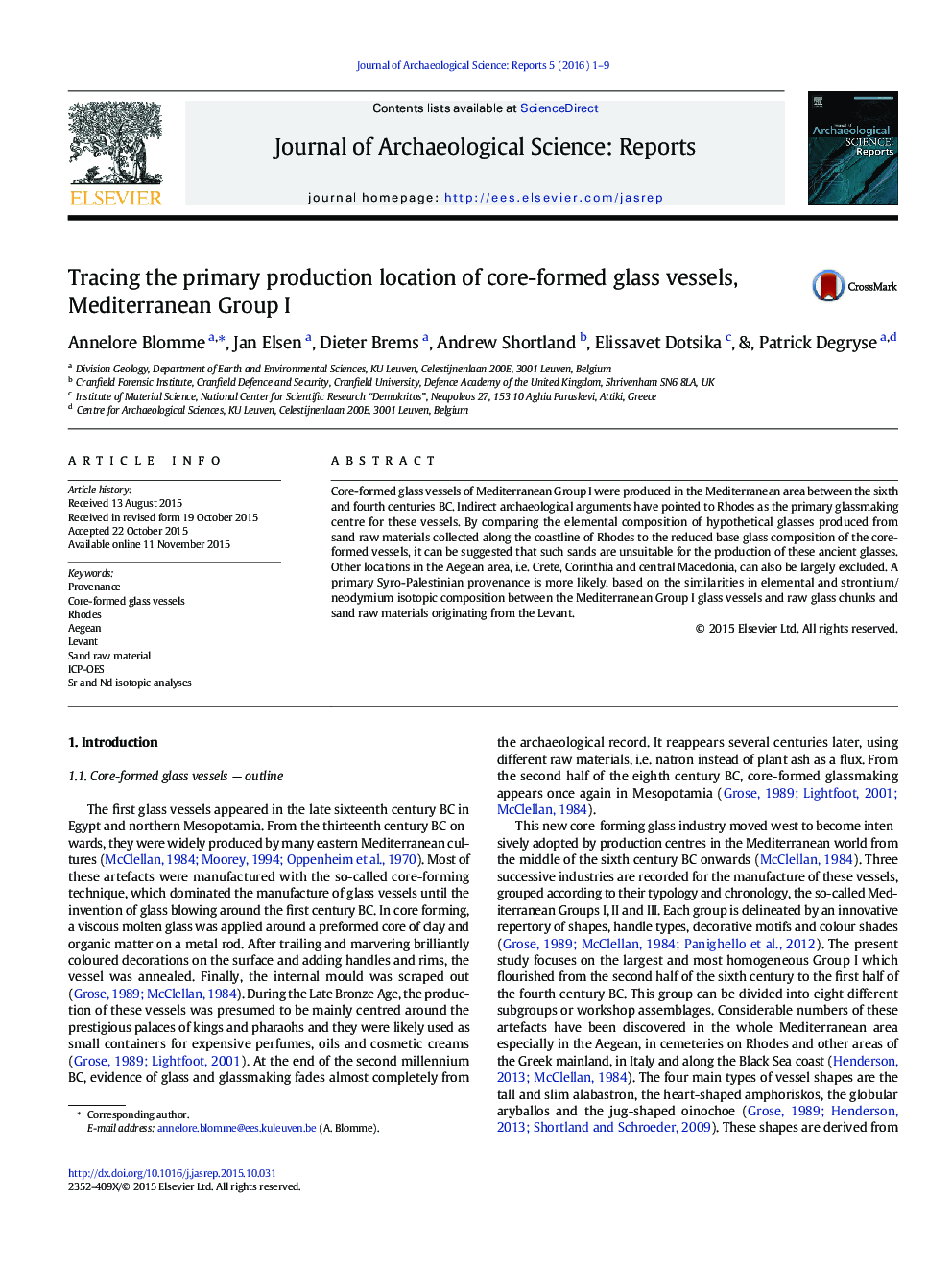| Article ID | Journal | Published Year | Pages | File Type |
|---|---|---|---|---|
| 7445720 | Journal of Archaeological Science: Reports | 2016 | 9 Pages |
Abstract
Core-formed glass vessels of Mediterranean Group I were produced in the Mediterranean area between the sixth and fourth centuries BC. Indirect archaeological arguments have pointed to Rhodes as the primary glassmaking centre for these vessels. By comparing the elemental composition of hypothetical glasses produced from sand raw materials collected along the coastline of Rhodes to the reduced base glass composition of the core-formed vessels, it can be suggested that such sands are unsuitable for the production of these ancient glasses. Other locations in the Aegean area, i.e. Crete, Corinthia and central Macedonia, can also be largely excluded. A primary Syro-Palestinian provenance is more likely, based on the similarities in elemental and strontium/neodymium isotopic composition between the Mediterranean Group I glass vessels and raw glass chunks and sand raw materials originating from the Levant.
Keywords
Related Topics
Social Sciences and Humanities
Arts and Humanities
History
Authors
Annelore Blomme, Jan Elsen, Dieter Brems, Andrew Shortland, Elissavet Dotsika, Patrick Degryse,
